WhatsApp users are going to have fun, won’t have to give a number, still calls will be made
WhatsApp is introducing a new feature that will allow users to make calls using a unique username instead of their phone number, enhancing user privacy. This feature, which is currently in development and expected to roll out in beta soon, means people will not need to share or save numbers to communicate on the platform. WhatsApp to Let Users Make Calls Using Usernames Instead of Phone Numbers: Report WhatsApp is reportedly working on a new feature that will let users search and call others using usernames. It is currently under development and not yet available for beta testing. The “Search and Call Using Username” feature is already in development for WhatsApp on iOS. However, WhatsApp is now working on the same functionality for Android, which was spotted in the WhatsApp beta for the Android 2.25.33.2 update.
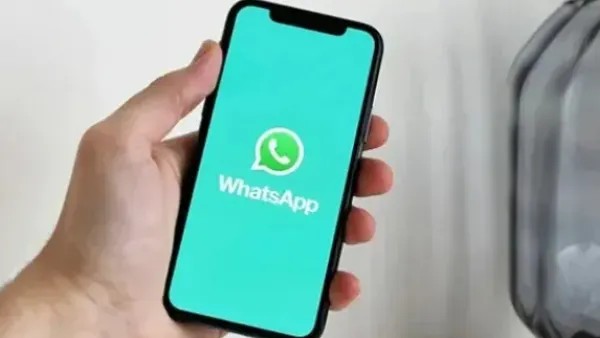
WhatsApp KYC Scam: How a Fake Bank Message Almost Tricked My Father I had only heard about WhatsApp scams before but never experienced one personally—until it happened in my own house. This afternoon, my father received a WhatsApp message with a KYC update APK file and almost installed the app. Thankfully, he stopped just in time and saved himself from the fraud. Here’s how the scam actually works, what really happened, and what you should do if you ever face a similar situation.
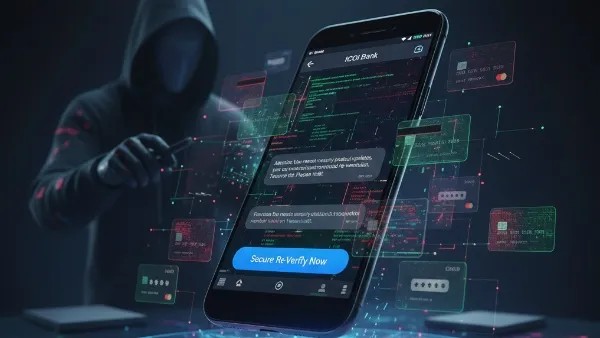
No More Passwords: How to Protect Your WhatsApp Chat Backup with Face or Fingerprint Unlock If you rely on WhatsApp for personal or work conversations, securing your chat history is important—especially when switching phones or restoring data. WhatsApp now lets you encrypt your chat backups using passkeys, making the process simpler and more secure than before. What’s Changing WhatsApp has long supported end-to-end encryption for messages and calls, which keeps your chats private. But backups—stored on Google Drive or iCloud—could still rely on passwords or lengthy encryption keys for protection. With this new update, you can now use a passkey—like your fingerprint, face scan, or phone’s screen lock code—to encrypt your chat backups. This removes the need to remember or store a complicated 64-digit key. In short, WhatsApp is linking your backup security to something you already use daily: your phone’s authentication method. How to Turn On Passkey Encryption for WhatsApp Backups Before starting, make sure your app is updated to the latest version. The rollout is gradual, so this option might appear over the coming weeks. Here’s how to enable it once available: Open WhatsApp. Tap the three dots in the top-right corner (on Android) or go to Settings directly (on iPhone). Select Chats. Tap Chat Backup. Choose End-to-end Encrypted Backup. Follow the on-screen steps to set it up using your fingerprint, face, or screen lock code. Once completed, your backup will be encrypted automatically whenever it’s created or restored. Why Encrypt Your Chat Backups Chat backups often contain years of photos, messages, and shared files. Encrypting them ensures that: No one (not even WhatsApp or your cloud provider) can access your backup data. Your backup stays protected if your phone or cloud account is compromised. You maintain full control over your stored messages. It’s an extra layer of protection that runs quietly in the background. How It Works in Practice When you set up a new phone or reinstall WhatsApp, you’ll unlock your encrypted backup using the same authentication method—no passwords required. It’s the same security layer you already use to access your device. The app uses your device’s built-in security system to manage encryption keys, which means you never have to handle them yourself. If You Don’t See the Option Yet The feature is being released gradually worldwide. If it’s not visible in your settings yet, keep your app updated and check again in the coming weeks. You don’t need to reinstall or change anything else in the meantime.
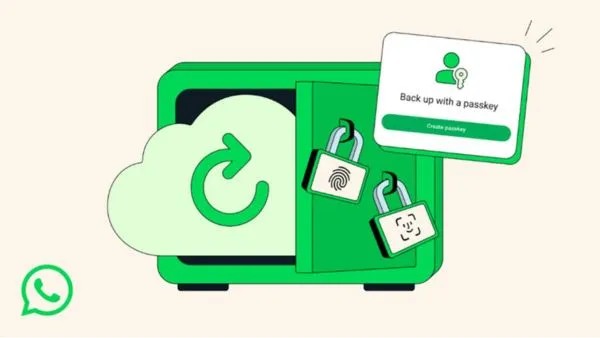
WhatsApp Launches Standalone Apple Watch App Offering Complete Messaging Experience and Advanced Features WhatsApp has launched a new app for the Apple Watch, offering a full messaging experience directly on the device. This update from Meta allows users to manage chats and stay connected without needing their iPhone. The app includes several features that enhance user interaction with WhatsApp on the Apple Watch. Key Features of WhatsApp on Apple Watch One of the main features is call notifications. Users can see incoming WhatsApp call alerts and identify callers directly on their Apple Watch. Additionally, entire messages, even lengthy ones, can be read from the watch screen, providing convenience for users who prefer not to use their phones.
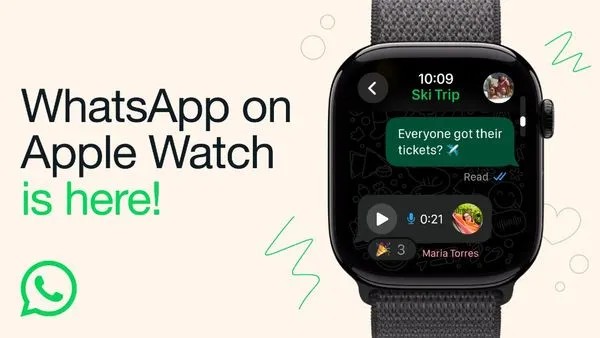
The app also supports voice messages, allowing users to record and send voice notes straight from their Apple Watch. Quick emoji reactions are available for incoming messages, making it easier to respond promptly without typing. Furthermore, images and stickers are displayed clearly on the watch screen. Enhanced Chat History and Compatibility Another improvement is the visibility of more recent chat history when viewing messages on the watch. This feature helps users keep track of ongoing conversations without switching devices frequently. The new app is compatible with Apple Watch Series 4 or later running watchOS 10 or above. WhatsApp expressed excitement about this development: “This is just the beginning of making WhatsApp on your Apple Watch an even better experience. As always, your personal messages and calls remain private with end-to-end encryption. We look forward to introducing even more useful features for Apple Watch users in the future.”
This update marks a significant step in enhancing user experience by integrating essential messaging functions into wearable technology. It reflects WhatsApp’s commitment to privacy with end-to-end encryption while expanding its functionality across different platforms.
Key Details
“Liquid Glass” Design: The article also mentions that iPhone users might soon see the “Liquid Glass” design, which is part of Apple’s iOS 26 update that gives the interface a transparent, fluid appearance. This is a visual change to the operating system’s interface itself, not a specific WhatsApp feature.
Username-Based Calls: Users will be able to initiate voice and video calls by searching for another person’s unique username within the “Calls” tab, similar to how this feature works on other messaging apps like Telegram.
Privacy and Security: This development provides an extra layer of privacy by enabling communication without exposing personal phone numbers. All calls made using usernames will retain WhatsApp’s end-to-end encryption.
Availability: The feature is under active development for both iOS and Android platforms and is expected to become more widely available by 2026. WhatsApp Username Feature Coming In 2026: Finally, Connect With Revealing Number!
Starting next year, WhatsApp may let you create unique usernames, enabling private messaging and calls without exchanging phone numbers. Here is how it will work.
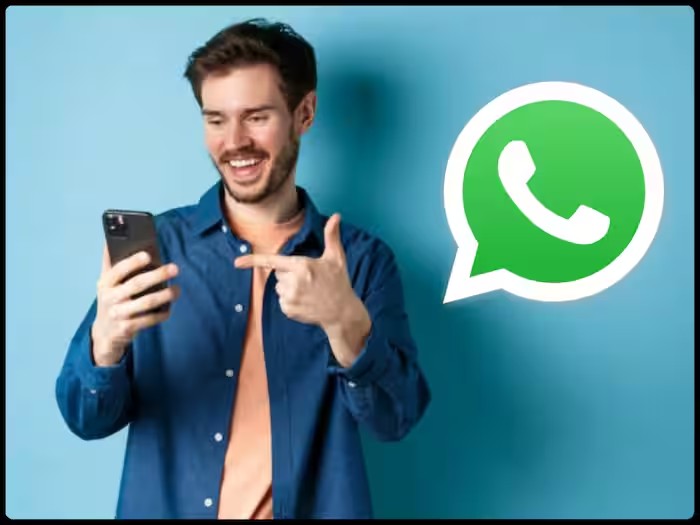
After a long wait, WhatsApp is finally set to introduce one of its most requested features – usernames. Well, not that soon! As per a report by Website, the WhatsApp username option will come by next year. Meta has started preparing businesses and developers for the upcoming rollout, which is expected to arrive in 2026, the report suggested. WhatsApp Dating Scam: How A Bengaluru Man Lost Rs 32 Lakh To Fake High-Profile Matches
A 63-year-old Bengaluru resident was duped of Rs 32 lakh in a WhatsApp love scam promising connections with “high-profile” women. Here’s what happened.
Nov 06, 2025, 04:44 PM (IST)

A 63-year-old resident of Horamavu in East Bengaluru has lost Rs 32 lakh in a WhatsApp-based dating scam that reportedly lasted more than a month. The fraud began in early September and continued until mid-October before the man realised he had been duped. The case was registered with the East CEN Crime Police on October 23.
How the Fraud Took Place
According to a report by The Times of India, the victim received a call from a person claiming to work for a private dating agency that offered connections with “high-profile” women. The caller asked him to pay a registration fee of Rs 1,950 to activate his membership. Trusting the proposal, the man made the payment through an online transfer. Soon after, he received pictures of three women on WhatsApp and was asked to choose one. He selected a woman who introduced herself as Ritika. The two began chatting regularly, and over time, she gained his trust.
Before the Dussehra festival, Ritika told him she was travelling to her hometown and connected him with another person named Priti, who said she would coordinate their meeting. Over the following weeks, Priti and others asked the victim to transfer multiple payments described as “service charges,” “processing fees,” and “meeting arrangements.” Each time he made a payment, he was told there were more charges pending.
By the time the man grew suspicious, he had transferred over Rs 32 lakh to different bank accounts. When he refused to send more money, the fraudsters allegedly began threatening him with legal consequences. Realising he had been scammed, he filed a police complaint. Apple Watch Again Saves Life Of A 26-Year Old Man In India! This Time, It Is Apple Watch Series 9
An Apple Watch Series 9 alert helped a 26-year-old man from Madhya Pradesh detect dangerously high blood pressure in time, saving him from a possible stroke.
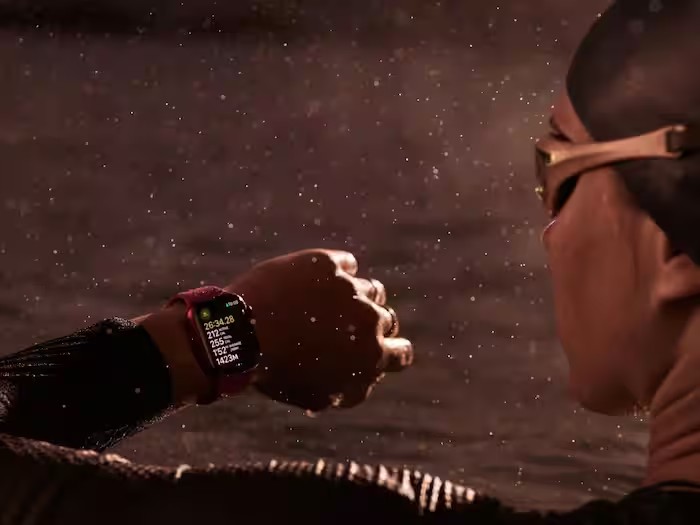
Apple Watch is not only a smart wearable, but a Health and fitness device which can track your daily activities to maintain a perfect schedule. If luck is with you, along with the Apple Watch, then it can be an even lifesaver too. A 26-year-old man, Sahil, from Madhya Pradesh, just experienced the same. iPhone 16 Plus Gets Massive Rs 24,000 Price Cut Online: Here’s The Deal iPhone 16 Plus has received a major price cut online, bringing its price down by nearly Rs 24,000. Here’s everything you need to know about the offer.
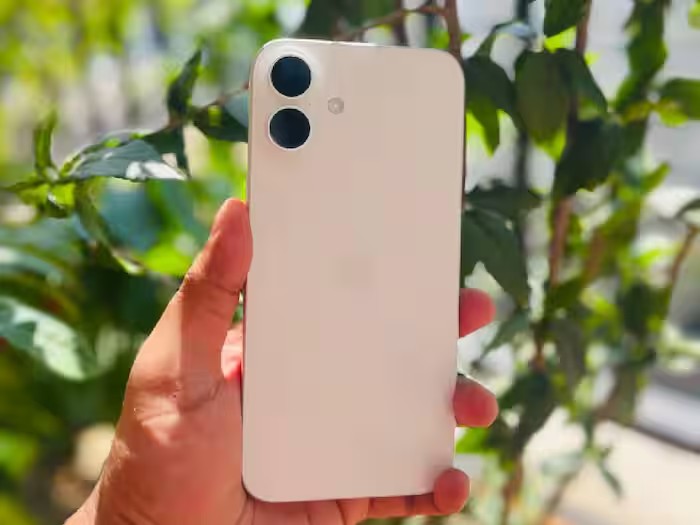
Festive season might be over, but you can still grab the best deal on one of the most popular iPhones online. The iPhone 16 series recently saw a big price drop during the festive sales, and you can still snag the iPhone 16 Plus at a massive discount. Launched last year at a starting price of Rs 89,900, the device is now available at almost Rs 24,000 off. Here’s how to get the deal.
iPhone 16 Plus Deal on JioMart
The iPhone 16 Plus (128), originally launched at Rs 89,900, saw a price drop of Rs 10,000 after the iPhone 17 series launch – which skips the Plus variant this year. It is currently listed on JioMart at Rs 65,990 after an additional price cut of Rs 13,910 – taking your total savings to Rs 23,910. That’s a great deal one can score on a flagship device.
iPhone 16 Plus Specifications, Features
Launched last year, the iPhone 16 Plus is equipped with a large 6.7-inch Super Retina XDR OLED screen with 120Hz ProMotion technology and the Dynamic Island. It is powered by Apple’s A18 chipset, which also supports various Apple Intelligence features.
In terms of cameras, the iPhone 16 Plus sports a dual rear camera setup. It includes a 48MP Fusion main camera with 2x optical-quality zoom and a 12MP ultra-wide-angle lens. On the front, the device houses a 12MP TrueDepth camera for selfies and FaceTime calls. The phone also supports Face ID for secure authentication.
The iPhone 16 Plus features a USB-C connector for charging. It also supports up to 25W wireless charging with a Qi charger. The device is offered in two storage options – 128GB and 256GB. It is available in Ultramarine, Teal, Pink, White, and Black colourways. WhatsApp To Have Companion Apple Watch App For Quick Messaging Soon: Report whatsApp is working on a dedicated app for Apple Watch users, which will let you quickly reply or even react to the messages. What else will it do? Check here.
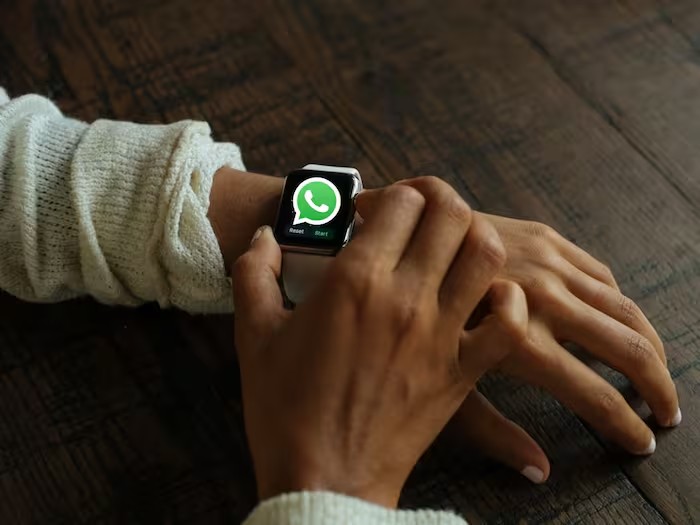
You may still be getting WhatsApp notifications on your Apple Watch, but it’s about to get an upgrade with a companion app. It will allow you to read messages, reply and even send reactions for the WhatsApp messages directly from your wrist, without the need for your iPhone all the time. WhatsApp To Get Facebook Or LinkedIn-Like Cover Image Soon: Here Is How It Will Work
WhatsApp is working on a new feature which will let you put a cover image on your profile; however, it will be limited to Business account users.
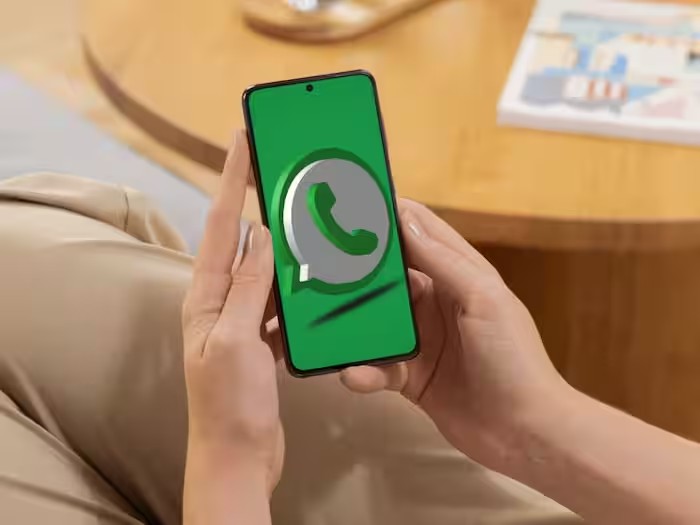
WhatsApp is getting Cover Photo feature soon. Know all the details. WhatsApp is set to take another crucial step towards making your profiles more appealing to users. As per a report by WabetaInfo, WhatsApp is testing a feature to let the accounts choose a cover photo. This will let the WhatsApp users have a personalised page with a visually appealing banner image, in addition to their usual profile photos and Status updates. This is similar to LinkedIn’s or Facebook’s year-old feature to add a cover photo on their profile to let users know more about them in detail. In short, your WhatsApp profile will soon feel a bit more like a social space rather than just a chat list. The banner will sit right at the top of your profile page, giving your contacts a small visual glimpse. How Will It Work?
When the feature rolls out, setting a cover photo will be as easy as changing your profile picture. You’ll simply head to your profile settings, choose or capture an image, and set it as your cover. Once saved, it will appear prominently at the top of your profile. It’s a design choice we’ve already seen work well on other social apps, and it’s nice to see WhatsApp finally adopting it for everyday users too.
Of course, personalisation comes with privacy settings. WhatsApp is reportedly testing new controls that let users choose who can see their cover photo. The options currently include “Everyone,” “My Contacts,” and “Nobody.” For now, the more selective “My contacts except…” option isn’t part of the setup, but it could arrive later as the feature evolves.
When Will It Roll Out?
The cover photo feature is still under development and hasn’t reached most users yet. It’s currently being tested in beta versions of the Android app, with iOS likely to follow later. WhatsApp typically runs thorough internal testing before wider rollout, so expect to see it in the coming weeks or months. WhatsApp To Let You Manage Single Chat Storage Soon! Heres How It Will Help You WhatsApp is testing a new feature that lets you manage storage for each chat individually. Here is how it will help you. WhatsApp, a popular free messaging and video calling app used by over 2 billion people globally. The accompanying text discusses upcoming features and updates for the platform, including one that might allow users to make calls without needing to share their phone number. WhatsApp logo, which is a widely recognized symbol for the popular messaging and video calling app.
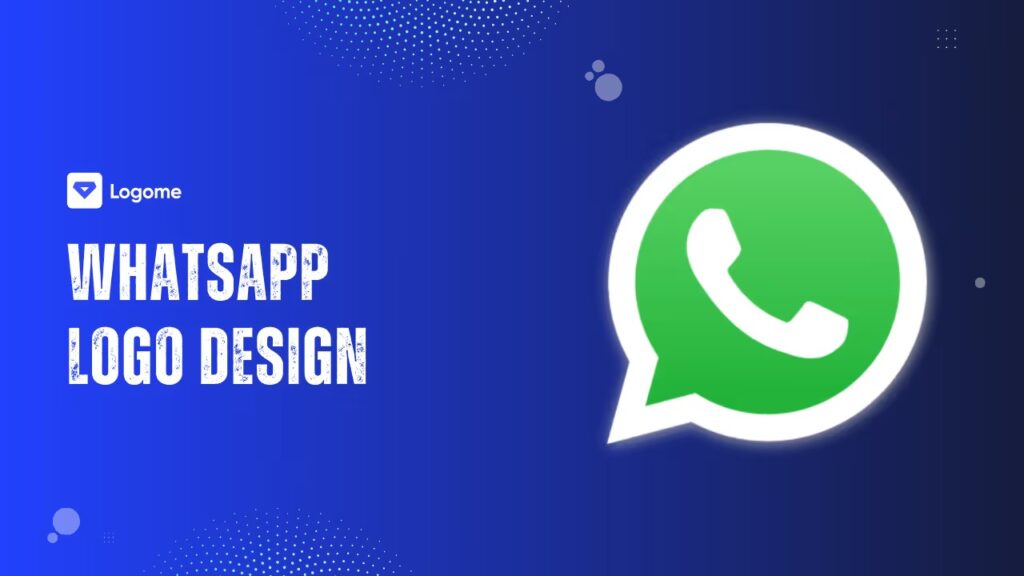
The WhatsApp logo is one of the most recognizable symbols in the digital world. Its green speech bubble with a phone icon perfectly represents instant messaging and communication. But have you ever wondered about its evolution and meaning?
Since its launch in 2009, the WhatsApp logo evolution has been subtle yet effective. The design has stayed minimalist and functional, making it easy to identify across devices. The WhatsApp branding strategy focuses on simplicity, trust, and seamless connectivity, ensuring the logo remains timeless.
In this blog, we’ll dive into the WhatsApp logo meaning, color psychology, typography, and branding strategy. We’ll also explore how it compares to other messaging app logos like Telegram and Signal. Let’s decode the branding success behind WhatsApp’s iconic logo!
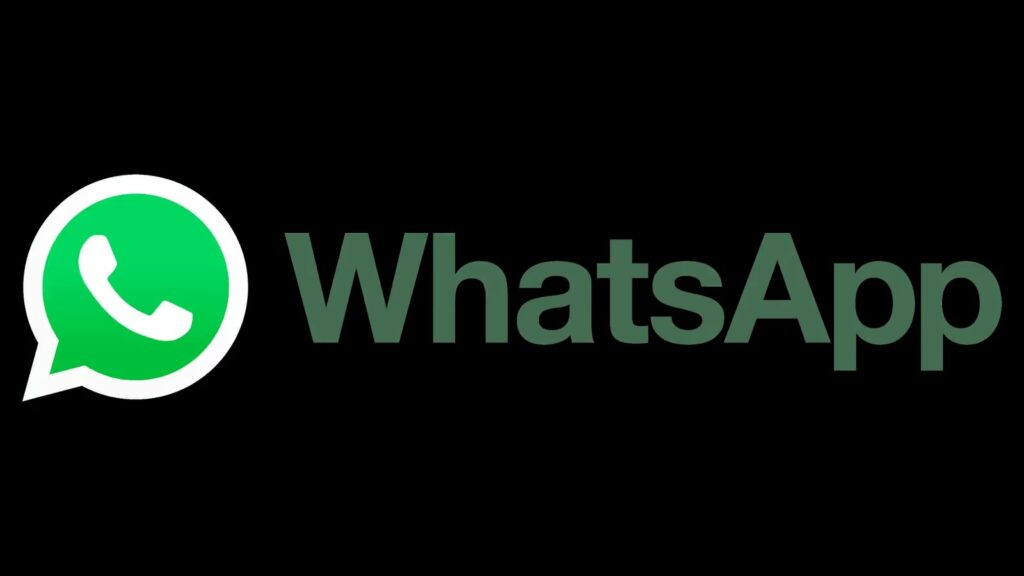
Understanding the WhatsApp Logo
The WhatsApp logo is one of the most recognizable symbols in the world of messaging apps. With its green speech bubble and phone icon, it instantly conveys communication, connection, and simplicity. Unlike other messaging app logos, WhatsApp’s design has remained consistent over the years, reinforcing its strong brand identity.
But why does the WhatsApp logo meaning resonate so well with users? And how does it compare to other platforms like Telegram or iMessage? Understanding its branding strategy, evolution, and design choices gives us insight into why it continues to dominate the messaging industry.
Why is the WhatsApp Logo Instantly Recognizable?
A successful logo is simple, memorable, and scalable—and the WhatsApp logo checks all these boxes. The speech bubble icon represents instant messaging, while the phone symbol reinforces the app’s calling feature.
The WhatsApp logo color psychology also plays a crucial role. Green symbolizes trust, reliability, and growth, making users feel secure when using the app. Combined with a clean, minimalist design, the logo is easy to recognize even in small app icons or favicons.
WhatsApp’s branding success comes from sticking to its core visual identity. While there have been subtle logo refinements, the WhatsApp logo evolution has always maintained familiarity, ensuring users instantly associate it with fast and secure messaging.
The Role of Branding in Messaging Apps
In today’s digital landscape, a logo isn’t just a design—it’s an identity. WhatsApp’s branding strategy focuses on clarity, usability, and trust. Unlike some competitors that frequently rebrand, WhatsApp keeps its logo consistent, making it one of the best messaging app logos in the industry.
Messaging apps like Telegram, Signal, and Facebook Messenger each have unique branding approaches. But WhatsApp’s minimalist logo trend stands out because it prioritizes function over flashy design. The logo isn’t just an icon—it’s a symbol of encrypted, reliable communication.
As part of Meta’s branding strategy, WhatsApp is now aligned with Facebook and Instagram, ensuring that its brand identity remains strong across platforms. This consistency reinforces trust and keeps users engaged with the app daily.
WhatsApp Logo Design: Breaking Down the Elements
The WhatsApp logo is a perfect example of effective branding through simplicity. Every detail in its design serves a purpose, from the speech bubble and phone icon to the color psychology and typography. These elements work together to create an instant connection with users, reinforcing WhatsApp’s role as a trusted messaging app. Let’s break down the key aspects of the WhatsApp logo design and what makes it so effective.
The Meaning Behind the WhatsApp Logo
The WhatsApp logo meaning is straightforward yet powerful. It immediately communicates what the app does—connect people through messaging and calls. The combination of a speech bubble and a phone icon creates a clear and direct visual representation of communication.
Why a Speech Bubble and Phone Icon?
WhatsApp’s speech bubble is a universal symbol for chatting, conversation, and messaging. It reflects the app’s core purpose—instant communication. The phone icon inside the bubble reinforces WhatsApp’s calling features, reminding users that the app supports both text and voice communication.
Compared to other messaging app logos like Telegram or iMessage, WhatsApp’s logo is more direct and functional. Instead of using abstract symbols, it visually represents what the app offers, making it instantly recognizable even to first-time users.
WhatsApp Logo Color Psychology
Colors in a logo are not random—they influence how users feel and interact with a brand. The WhatsApp logo color psychology plays a big role in its branding success.
The Significance of Green and White in Branding
The green and white color scheme in the WhatsApp logo is carefully chosen for its psychological impact.
- Green represents trust, reliability, and positivity—ideal for an app that prioritizes secure messaging.
- White symbolizes clarity and simplicity, ensuring a clean and modern look.
This color choice is also unique compared to competitors. Facebook Messenger (blue), Telegram (light blue), and iMessage (grey/green) all use different color palettes. WhatsApp’s green branding makes it stand out in a crowded messaging market.
Typography and Font Style in the WhatsApp Logo
While most people recognize WhatsApp by its icon, the wordmark also plays a role in its branding strategy.
How Does WhatsApp’s Wordmark Complement its Icon?
The WhatsApp logo typography is simple and easy to read, just like the app itself. It uses a clean, sans-serif font that aligns with modern minimalist logo trends. The rounded edges of the letters match the soft, friendly look of the speech bubble, creating a cohesive brand identity.
WhatsApp’s font choice also reinforces its Meta branding strategy. It follows the same clean, modern aesthetic seen in Facebook and Instagram’s branding, ensuring consistency across all platforms.
The Evolution of the WhatsApp Logo: A Timeline
The WhatsApp logo has evolved subtly over the years, staying true to its core identity while adapting to modern design trends. Unlike some apps that frequently undergo dramatic rebrands, WhatsApp has made small but meaningful updates to keep its logo clean, relevant, and instantly recognizable. Let’s take a look at how the WhatsApp logo evolution has shaped its branding success.
The First WhatsApp Logo (2009): A Simple Concept
When WhatsApp launched in 2009, its logo was basic but effective. It featured a green speech bubble with a phone icon, instantly signaling communication and messaging. The design was simple, functional, and easy to recognize, making it one of the best messaging app logos at the time.
The use of green and white reflected trust and clarity, setting the foundation for WhatsApp’s branding strategy. Even in its earliest days, the WhatsApp logo meaning was clear—this was an app designed for quick and secure conversations.
The 2013 Redesign: Refining the Brand Identity
By 2013, WhatsApp had grown into a global messaging giant. To match its expanding user base, the WhatsApp logo redesign introduced a sleeker, more polished look.
The speech bubble was refined, the phone icon became sharper, and the green color was deepened for a more professional appeal. These changes helped WhatsApp align with modern minimalist logo trends, making the app feel more premium and reliable.
This redesign also ensured that the WhatsApp logo looked great on smartphones, desktops, and marketing materials, reinforcing its brand identity across platforms.
The 2018 WhatsApp Logo Update: A Subtle Refinement
In 2018, WhatsApp made another small but impactful change. The logo’s color contrast was slightly enhanced, making it more visually appealing across different backgrounds.
This update aligned with WhatsApp’s growing emphasis on encryption and security, ensuring the brand looked modern and trustworthy. Compared to competitors like Telegram and Signal, WhatsApp continued to maintain a familiar and stable identity while making minor visual enhancements.
How the Meta Rebranding Affects WhatsApp’s Logo?
In 2021, Facebook rebranded as Meta, impacting all its products, including WhatsApp. While the WhatsApp logo itself remained unchanged, the branding strategy evolved to connect WhatsApp more closely to the Meta ecosystem.
Now, users see “from Meta” under the WhatsApp logo, reinforcing its link to Facebook, Instagram, and Messenger. This integration aligns with Meta’s branding strategy, ensuring consistent design language across its platforms.
Despite Meta’s influence, WhatsApp has retained its original branding essence, proving that strong visual identity withstands corporate changes.
WhatsApp Logo Analysis: Why It Works So Well?
The WhatsApp logo is one of the most recognizable and effective branding elements in the digital world. Its simplicity, consistency, and strong visual identity make it a standout in the messaging app industry. But what makes it work so well? Let’s break down the elements that contribute to its branding success.
The Power of Simplicity in WhatsApp’s Logo Design
A great logo doesn’t need to be complex. The WhatsApp logo meaning is clear and direct—a speech bubble with a phone icon. This instantly tells users that WhatsApp is all about communication and connectivity.
The design follows minimalist logo trends, making it clean, easy to recognize, and highly scalable. Whether seen on a smartphone home screen, in a web browser, or as a WhatsApp favicon, the logo remains sharp and effective.
Its green and white color palette also plays a huge role. Green represents trust, reliability, and security, aligning with WhatsApp’s commitment to encrypted messaging. This color psychology makes the app feel safe and welcoming, setting it apart from other messaging platforms.
How WhatsApp Maintains Brand Consistency Across Platforms
One of the biggest reasons the WhatsApp logo works so well is its brand consistency. While some brands frequently change their logos, WhatsApp has kept its core design intact with only minor refinements over the years.
From iOS to Android, desktop to mobile, the logo appears identical across all devices, reinforcing the WhatsApp brand identity. Even after Facebook’s transition to Meta, WhatsApp has maintained its independent branding, with only the small “from Meta” tagline being added.
This consistent visual identity builds trust and recognition, ensuring users always associate the logo with seamless and secure messaging.
Comparison with Other Messaging App Logos (Telegram, Signal, iMessage)
How does the WhatsApp logo compare to its competitors?
- WhatsApp vs Telegram Logo: Telegram’s logo uses a paper airplane, symbolizing speed and lightweight communication. While visually appealing, it doesn’t immediately suggest messaging as clearly as WhatsApp’s speech bubble and phone icon.
- WhatsApp vs Signal Logo: Signal uses a speech bubble with a dotted outline, representing privacy and encryption. While effective, its branding is less mainstream and widely recognized compared to WhatsApp.
- WhatsApp vs iMessage Logo: Apple’s iMessage logo is a simple text bubble, reinforcing its Apple-exclusive ecosystem. However, its monochrome blue design lacks the strong brand association that WhatsApp’s green color offers.
WhatsApp Logo Usage in Different Applications
The WhatsApp logo is not just a simple branding element—it’s a powerful visual identity that remains consistent across multiple platforms. Whether on mobile, desktop, or within the Meta ecosystem, the logo retains its clarity, simplicity, and strong recognition. Let’s explore how WhatsApp’s logo is used across different applications.
WhatsApp Logo on Mobile vs. Desktop
The WhatsApp logo appears on both mobile and desktop, but there are subtle differences in how it is presented.
On mobile devices, the WhatsApp icon is prominently displayed on the home screen, app drawer, and notifications. The speech bubble with a phone icon remains unchanged, ensuring users can easily recognize the app. The green background makes it stand out among other apps, reinforcing its branding strategy.
On desktop and web versions, the WhatsApp logo appears in a slightly different form. Instead of an app icon, the wordmark “WhatsApp” is often seen along with the logo. This maintains brand consistency while making it adaptable for larger screens and interface designs.
WhatsApp’s Favicon: A Small Yet Recognizable Icon
A favicon is the tiny logo that appears on browser tabs and bookmarks. Even at such a small size, the WhatsApp favicon remains clear and recognizable.

Unlike some messaging app logos that become unclear when shrunk, WhatsApp’s simple and bold design makes it stand out. The green background and speech bubble remain visible, ensuring users can easily identify the tab even when multiple are open.
This is a great example of how the WhatsApp logo evolution has prioritized clarity and scalability, making it effective even in the smallest digital spaces.
The WhatsApp Logo in the Meta Ecosystem
Since Meta’s rebranding, WhatsApp is now more closely linked to Facebook, Instagram, and Messenger. While the WhatsApp logo itself hasn’t changed, its placement within the Meta ecosystem has become more prominent.
Now, when you open WhatsApp, you’ll see “from Meta” beneath the logo, aligning it with Meta’s branding strategy. This subtle change reinforces WhatsApp’s connection to Meta’s family of apps, making it clear that it belongs to the same ecosystem as Instagram and Facebook Messenger.
Despite this integration, WhatsApp has retained its independent identity, unlike Messenger, which shares design similarities with Facebook. This balance helps WhatsApp stand out while staying connected to the larger Meta brand.
The Future of the WhatsApp Logo: Will It Change?
The WhatsApp logo has remained largely unchanged over the years, with only subtle refinements to keep it modern and user-friendly. But as branding trends evolve, could we see a WhatsApp logo redesign in the future? While the core WhatsApp brand identity is strong, technology and AI-driven design innovations may shape its next phase.
Potential Trends in Messaging App Logos
Many messaging app logos are shifting toward even simpler, flatter, and more dynamic designs. With the rise of minimalist logo trends, future updates could include:
- Adaptive logos that change based on light and dark mode settings.
- Animated logos that subtly move or change when opening the app.
- Smoother gradients for a more modern digital aesthetic.
While WhatsApp’s green color scheme and speech bubble icon are deeply connected to its identity, small refinements could keep it fresh and relevant.
Could WhatsApp’s Logo Evolve with AI and Branding Innovations?
AI-driven branding is already transforming logo design strategies. Future WhatsApp logo updates could leverage AI to:
- Personalize colors and themes based on user preferences.
- Enhance brand integration with the Meta ecosystem while keeping WhatsApp’s distinct identity.
- Improve accessibility by adjusting contrast and visibility for different user needs.
Despite potential refinements, the WhatsApp logo meaning and core design will likely remain familiar and consistent. Any changes would aim to enhance usability while maintaining the brand’s strong global recognition.
How to Design a WhatsApp-Inspired Logo for Your Brand?
The WhatsApp logo is a perfect example of simple, effective branding. Its clean design, color psychology, and instant recognizability make it a great reference for brands looking to create a modern and user-friendly logo. Here’s how you can design a WhatsApp-inspired logo for your brand.
Key Takeaways from WhatsApp’s Logo Design
The WhatsApp logo’s meaning is clear—communication and connectivity. To design a similar logo, consider these elements:
- Simplicity: Keep the design minimalistic and easy to recognize.
- Color Psychology: Use green or calming colors that reflect trust and reliability.
- Scalability: Ensure the logo looks great across different platforms, from mobile apps to desktop branding.
By applying these principles, your logo can stand out while remaining clean and functional.
Tools to Create a Logo with Similar Branding Elements
You don’t need to be a graphic designer to create a WhatsApp-inspired logo. Several tools can help:
- Logome: AI-powered logo creation tool for quick and polished designs.
- Canva: Great for beginners with easy-to-use templates.
- Adobe Illustrator: Best for professional logo design with full customization.
- Figma: Perfect for team collaboration and modern UI branding.
These tools allow you to experiment with WhatsApp-like branding while adding a unique identity to your logo.
How Logome Can Help You Design a Professional Logo?
If you’re looking for an AI-powered, hassle-free way to create a logo, Logome is the perfect solution. It offers:
- Customizable logo templates inspired by modern branding trends.
- Easy-to-use tools for adjusting colors, fonts, and icons.
- Professional-grade logo designs optimized for digital and print use.
Conclusion
The WhatsApp logo is a perfect example of simplicity, consistency, and strong brand identity. Its minimalist design and effective color psychology make it one of the best messaging app logos.
If you’re looking to create a professional, WhatsApp-inspired logo, Logome is the perfect tool. With AI-powered customization, easy-to-use templates, and modern design features, Logome helps you build a unique and impactful brand identity. Start designing your perfect logo today with Logome!
FAQs on WhatsApp Logo Design Analysis
What does the WhatsApp logo symbolize?
The WhatsApp logo meaning is simple—it represents instant communication. The speech bubble symbolizes messaging, while the phone icon reinforces WhatsApp’s calling feature. Together, they create a clear and recognizable brand identity.
Has the WhatsApp logo changed over the years?
Yes, but only subtly. The WhatsApp logo evolution includes minor refinements in color contrast and design clarity, ensuring it remains modern, scalable, and user-friendly without losing its original identity.
Why does WhatsApp use green and white in its logo?
The WhatsApp logo color psychology reflects trust, security, and clarity. Green symbolizes reliability and freshness, while white ensures a clean and minimalistic look, making it visually appealing.
How does WhatsApp’s logo compare to Telegram and Signal?
Unlike Telegram’s paper airplane or Signal’s dotted speech bubble, WhatsApp’s speech bubble and phone icon clearly represent both messaging and calling, making it more instantly recognizable among users.
How can I create a WhatsApp-inspired logo for my brand?
You can use AI-powered tools like Logome to design a minimalist and professional logo. Logome offers customizable templates, color selection, and branding elements to help you create a unique yet familiar visual identity.